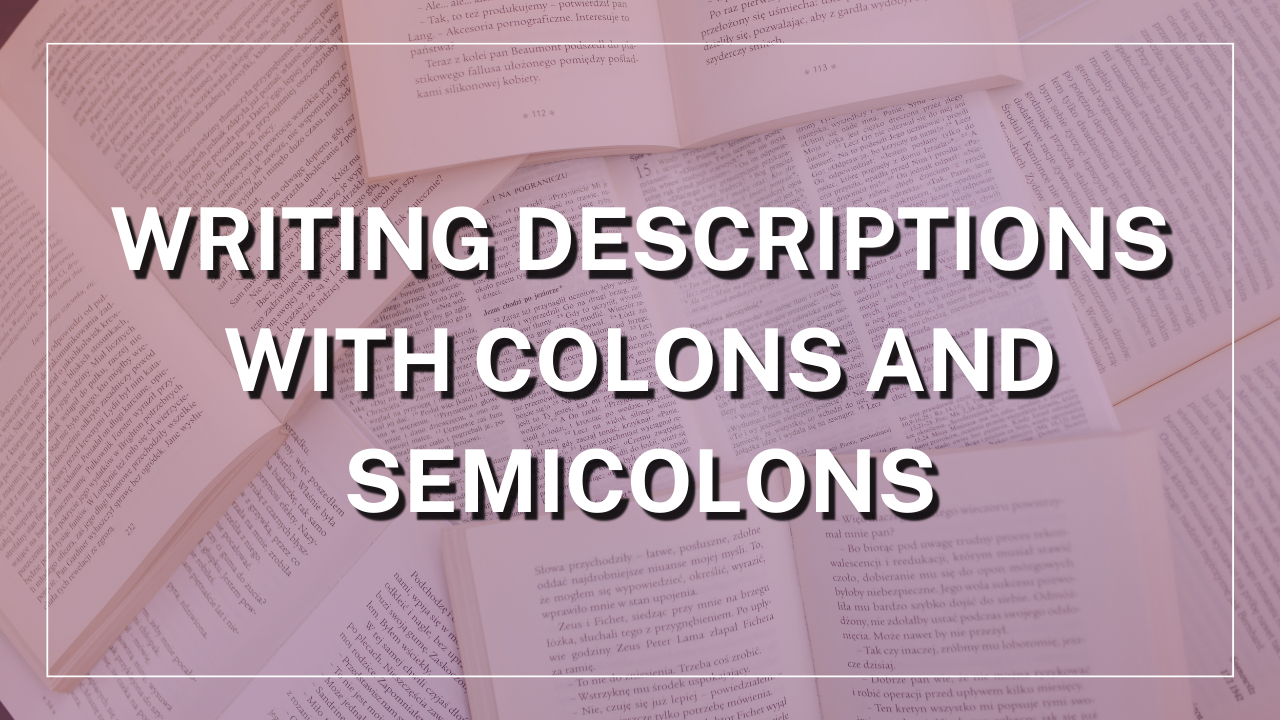Writing descriptions can be a challenging task for many writers. It requires a balance of creativity and precision to paint a picture that is both vivid and accurate. One way to achieve this balance is through the use of colons and semicolons. These punctuation marks can help writers create descriptive sentences that are both concise and detailed.
Using Colons (:)
A colon is a punctuation mark that can be used to introduce a list, a quotation, or an explanation. When used correctly, a colon can help writers create descriptive sentences that provide specific details about a person, place, or thing. Here are some examples of how to use colons to write descriptions:
Example 1: The city was filled with vibrant colours: bright reds, deep blues, and golden yellows. In this example, the colon is used to introduce a list of colours that describe the city. By using a colon, the writer is able to convey the diversity and vibrancy of the city through a concise sentence.
Example 2: Her hair was a beautiful shade of brown: a warm, chestnut hue that glimmered in the sunlight. Here, the colon is used to provide a detailed description of the shade of brown in the person’s hair. By using a colon, the writer is able to create a vivid image of the hair that is both specific and nuanced.
Using Semicolons (;)
A semicolon is a punctuation mark that can be used to connect two closely related independent clauses. When used correctly, a semicolon can help writers create descriptive sentences that are both complex and precise. Here are some examples of how to use semicolons to write descriptions:
Example 1: The mountains were majestic; their peaks pierced the sky. In this example, the semicolon is used to connect two independent clauses that describe the mountains. By using a semicolon, the writer is able to create a sentence that is both descriptive and elegant.
Example 2: The old man had weathered skin; his face was etched with lines that told the story of a long and hard life.
Here, the semicolon is used to connect two independent clauses that describe the old man’s face. By using a semicolon, the writer is able to create a sentence that is both descriptive and emotive.
Tips for Using Colons and Semicolons in Descriptions
Here are some additional tips for using colons and semicolons in descriptions:
- Use colons to introduce lists of descriptive details. This can help writers provide specific details about a person, place, or thing in a concise and organized way.
- Use semicolons to connect closely related independent clauses. This can help writers create complex sentences that provide a nuanced and detailed description.
- Be mindful of the tone and style of your writing. Colons and semicolons can be used to create both formal and informal descriptions, depending on the context and the writer’s intentions.
- Read your writing aloud to ensure that it flows smoothly and makes sense. This can help you identify any awkward or unclear sentences that may need to be revised.
In conclusion, using colons and semicolons can be a powerful tool for writers who want to create descriptive sentences that are both precise and detailed. By using these punctuation marks correctly, writers can create sentences that are both elegant and informative, and that help readers to vividly imagine the people, places, and things they are reading about.

